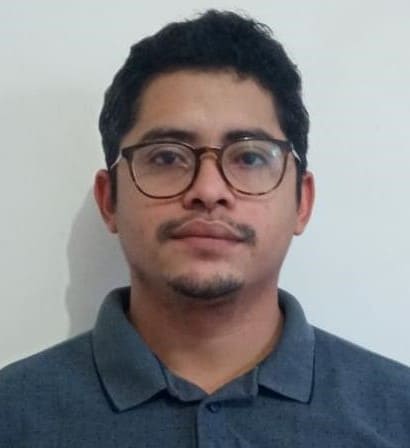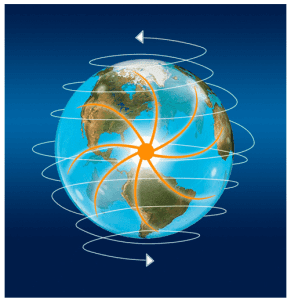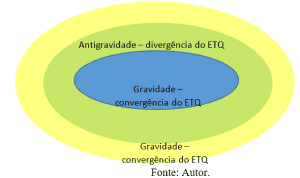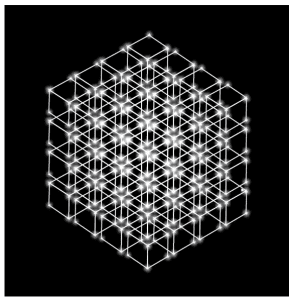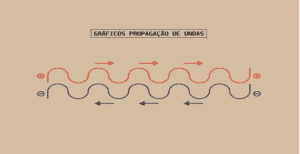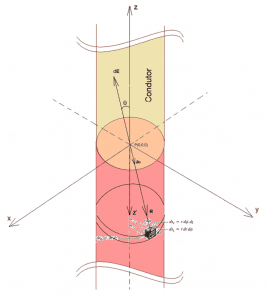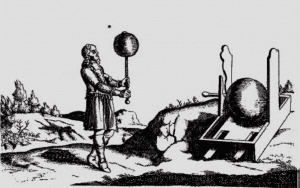ORIGINAL ARTICLE
SILVA, Rafael Leal da [1]
SILVA, Rafael Leal da. Rocket stove as a proposal of experimental practice for the teaching of Physics. Revista Científica Multidisciplinar Núcleo do Conhecimento. Year 05, Ed. 07, Vol. 02, pp. 28-42. July 2020. ISSN: 2448-0959, Access link: https://www.nucleodoconhecimento.com.br/fisica-en/rocket-stove , DOI: 10.32749/nucleodoconhecimento.com.br/fisica-en/rocket-stove
SUMMARY
Experimental practices enable students to an environment in which learning occurs interactively, thus giving them the opportunity to create hypotheses and test them in an environment where the teacher is the mediator in the teaching-learning process. Due to the low supply of laboratories equipped in some locations, it is necessary to resort to alternatives, especially those with low cost and sustainable proposals. This article presents qualitative results as well as a proposal for the teaching of thermodynamic topics using as a didactic object the rocket stove, which has been studied worldwide for being less polluting and more energy efficient than stoves that use biomass available for economically vulnerable regions of the world. Because it is a common theme for most of the students involved, in the activity proposed in this article the rocket stove, besides facilitating the teaching of physics concepts, allowed a discussion about sustainability in the context of the experimental class. The experimental practice was made within the proposal of the divergent laboratory, because in this type of environment, the student has more freedom to be the main promoter of their learning process, besides allowing an interactive participation between groups. A quantitative proposal based on the studies of Okonkwo et al (2017) is also presented in this article for a more advanced physics class. In general, after the performance and during the experiment, the students’ excitement about the way they were learning physics was notorious, for going beyond the traditional rigid methodology of theoretical classes.
Keywords: Rocket stove, physics teaching, experimental practices, divergent laboratory.
1. INTRODUCTION
The teaching of physics faces great challenges regarding didactic transposition. The traditional way of teaching has been criticized by researchers in teaching as not being efficient to overcome the educational crisis of this discipline in Brazil. Among the proposals for solving problems, teaching that uses experimental practices as a tool has been pointed out as of paramount importance, since physics has an experimental character that cannot be dissociated from the discipline (PINHO-ALVES, 2002; FARIA e CARNEIRO, 2020; FORÇA et al, 2011; KANBACH et al, 2005; ANDRADE, 2009).
Pinho-Alves (2000) draws attention to the use of the didactic laboratory as a teaching process. From this point of view, it has the power to mediate and warn against the old paradigm that saw it only as an experimental method. Therefore, the performance in the school space with the students must take into account the didactic transposition that makes more accessible the process of transformation of knowledge to teach when taught knowledge (PINHO-ALVES, 2000). Moreover, according to him, didactic transposition will occur through constructivism in the way of facing the production of science during the teaching-learning process.
For the application of projects of experimental practices as a participant in didactic transposition, it is necessary to know the reality of the school environment, as well as the sociocultural context of the institution, the pedagogical political project and educational legislation. All these factors influence the use of teaching laboratories in schools. In addition to the factors already mentioned, there is the process of teacher education linked to resistance by school and pedagogical managers to changes in the traditional way of teaching. Addressing this influence of the people involved in the school environment, Pinheiro comments on the difficulty in including the didactic laboratory in teaching:
For him, noosphere groups linked to the school community compete more sharply, such as the direction of public schools, owners of educational establishments, supervisors and educational advisors, the community of parents and teachers. There are countless aspects that contribute to the definition of knowledge to be taught, but we can identify that it is defined by the possibility of a social and legal control of learning. (PINHEIRO, 1996)
From the constructivist perspective, experimental activities simplify the didactic process, where the teacher is the manipulator of this tool. Thus, in constructivist transposition, the experiment is no longer an objective to teach, but rather an aggregating element in the process of knowledge acquisition. Therefore, with this objective, its application should be characterized by versatility, so that it assumes a mediating character (PINHO-ALVES, 2002).
When implementing the use of laboratory and all dynamics involved, it is necessary to choose which type of laboratory to use. In contrast to the traditional laboratory model, which emphasizes the verification or proof of law and also the exploration of concepts to exhaustion, the divergent laboratory has as main objective, to enable the student to decide on the scheme and experimental procedure to be adopted (PINHO-ALVES, 2002).
With regard to the application of the divergent laboratory, there are two stages. The first stage, called “exercise”, occurs at the moment when students perform activities and adapt to the equipment and instruments of experimental measures and techniques, as well as the theory presented. At this stage, the main purpose is the training of students. In the second stage, known as “experimentation”, the student will choose which activity they will perform, as well as their objectives, hypotheses and what measures they will perform. After planning, students should discuss with the teacher, in order to consider possible corrections of their conclusions, in addition to the feasibility of the materials to be used within the expected period of the experimental practice (PINHO ALVES, 2000; BORGES, 2002). Due to its versatility and possibilities in modifications outside the rigid standards of traditional laboratories, the divergent laboratory was adopted as a tool in this work.
Also in the context of experimental practices, Pearce (2007) advocates the use of technological projects aimed at sustainability, besides proposing materials that can be used in places of difficult access to teaching laboratories due to social conditions in several underdeveloped countries. Regarding the teaching of thermodynamics, Pearce indicates experiments with evaporative cooling, stoves/ovens, solar cooker, food dehydrator and other solar use devices.
In Brazil, the biomass energy matrix corresponds to one fifth of all energy consumed in the country (MAIA and GOMES, 2009). This opens space for a broad discussion both in the sense of purely said physics, as well as on more general topics such as global warming, greenhouse effect, deforestation, environmental conservation, emission of toxic gases and danger to health. Such topics would hardly be addressed in a traditional physics class when teaching the topics of thermodynamics(MAZORRA et al, 2019; GOLDEMBERG e LUCON, 2007; SILVA, 2019; SANTOS, 2017; CARVALHO, 2014).
This paper presents a pedagogical proposal of experimental practice using rocket stove as object of study because it allows a multidisciplinary approach to the themes: renewable energies, sustainability, experiments with low cost materials and teaching thermodynamics in a way closer to the students’ daily lives.
2. EXPERIMENTATION IN PHYSICS TEACHING
Both the organizers of study plans and teachers, when using practical work, encounter difficulties, as Hodson (1994) points out. Generally, these difficulties occur due to unnecessary barriers that hinder learning from excessive information. Thus, Hodson argues that two strategies can be adopted. The first: adopt a recipe approach where the experiment has a simple goal and a step-by-step roadmap. The second: a random behavior that makes the student appear busy. Here, there is a need for care when proposing an experimental practice, eliminating the very elaborate steps and avoiding paying too much attention to the measures of a single variable (HODSON, 1994).
For him, science teaching has three main convergent relevant aspects:
-
-
- Learning science acquiring and developing theoretical and conceptual knowledge;
- Learning about the nature of science developing an understanding of nature and methods of science, being aware of the complex interactions between knowledge and social development;
- Science practices, developing technical knowledge about scientific research and problem solving. (HODSON, 1994)
-
Just as experimentation is fundamental to making it scientific, it must be fundamental in the teaching of Science. According to Hodson (1994), the organizers and teachers still do not distinguish between experimental practice and the teaching-learning process. He also states that many comment on the error of understanding experimental practice only as that kind of work done on a lab bench.
Despite being a tool with proven efficacy in teaching, experimentation is criticized in the sense of its application, since there are too complex practices that could be more harmful to teaching than effective. For Séré (2002), there are different ways of including experimental practices in teaching, with different results:
-
-
- Understand theory, concepts, models, laws, specific reasoning, which often differ notably from current reasoning;
- Learn the whole theory;
- Perform experiments showing a number of realities, facts and instruments that use theories and procedures, to acquire experience, that confirm the experience;
- Learn the procedures and the paths to be able to use them when performing other experiments in other contexts;
- Learn to use the theoretical knowledge learned so that it is present and used when it comes to performing a complete research process. (SÉRÉ, 2002)
-
It is therefore necessary to detect the best approach within each situation when applying experimental practices. Depending on the chosen approach, practical activities may have the following objectives, as Borges (2002) states: to serve to test a law, to illustrate ideas and concepts of theoretical classes, and to deduce a formula or law about a phenomenon. The recommendation is to divide the students into small groups, facilitating the interaction in the preparation of the experiment and enabling the exchange of ideas. Another advantage pointed out is the informal nature of experimental practices that contrasts with the formalism and rigidity of theoretical classes (BORGES, 2002).
There are also critics of experimental practices in teaching, arguing that they are ineffective for students, because a lot of time is spent in important details in the teaching process, such as; assembly of the experiment, data collection, test of equations and verification of previously determined results. In this critical point of view of experimental practices, students do not devote sufficient time to the analysis and interpretation of the results and that these activities will have little effectiveness (COELHO et al, 2000).
Among the main difficulties in the introduction of science teaching with laboratories, Pinho-Alves (2000) point to the danger of having several objectives not compatible in the same activity. For him and other authors, one should look for more creative and efficient ways, with well-defined objectives, seeking to use methodologies that make experimental teaching and theoretical teaching agree, allowing to integrate practice and theory and thus, as a result, the experiment served as the basis to the theory.
In a more general context, when discarding the use of laboratories in science teaching, what happens is that teaching is reduced to a mere abstract system of definitions, formulas, laws and exercises, without connection with the fundamental character of sciences that has the experiment as the main agent of discovery. Theories of physics have their construction in mathematical models, however, without experimental proof it would not be possible to obtain an understanding of how nature works and why (AXT, 1991).
For Pinho-Alves (2000), the experimentation in teaching needs a type of laboratory suitable for each reality and that is in accordance with the objectives of educational institutions and teachers. The types of laboratories should be studied from the point of view of their characteristics.
In this work, we chose the divergent laboratory, because its dynamics allows the student to work real physical systems, allowing the approach of equally real problems whose answers are not preconceived. In addition, students can choose which scheme and procedure to adopt during the study. In the exercise stage, all students must answer a series of questions common to all students, procedures, measure, all aiming at training for the second stage. In the second stage, the students decide which activity they will perform, their objectives and hypotheses to be tested, right after the interaction with the teacher, there may be modification and eventual corrections, as well as the verification of the viability of the available material and time to perform the experiment (BORGES, 2002).
3. ROCKET STOVE
Within the perspective of the divergent laboratory approach, a practice involving rocket stoves was made. They follow the principles of design of Winiarski (1982) and the joint work of Still and Winiarski (2001) that aid in energetic efficiency compared to other stoves that use biomass as energy sources. The sizes of the stove openings are important as they must be sized. If the openings are small, the biomass cannot be burned properly and the smoke may return to the combustion site. Similarly, if the openings are large, the heat will not be transmitted to the pan escaping through exhaustion. In this work, we used the knee-type rocket stove model, according to the diagram in Figure 1.
Figure 1: Knee-type rocket stove scheme. The smaller base consists of a shelf that serves as a support for fuel and an inlet for airflow. The larger and internal part is the combustion chamber where the airflow meets the flame. The outside, in this example, is metal and, at the top, the outlet to the flame and opening to place the pan.
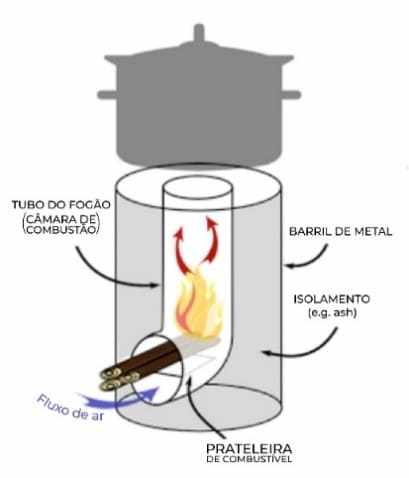
Deforestation is a problem in many South Asian countries. Replacing traditional three-burner stoves with rocket stoves reduced wood consumption on average from 3.68 tons to 2,706 tons per year in each household. There is a great demand for energy from people living in rural areas of Nepal dependent on biomass sources. Approximately 64% of Nepal’s population uses wood as their main source of energy for cooking (SUBEDEE et al, 2017).
In some regions of the world, due to deforestation and other factors, the main fuel used for stoves is dry mandible. However, it is less energy efficient than wood and coal (WITT et al, 2006). As a result of the prototype rocket stove that uses manure as fuel, compared to other stoves that do not follow the principles of Larry Winiarski (1982), the article presents that in the test of boiling water, the prototype is more energy efficient and reduced CO emissions by 44% compared to fire directly in wood. Showing that it is a promising prototype by lowering pollution levels and reducing the economic losses of using large amounts of fuel.
Ochieng et al. (2013) and their collaborators investigated the emission of carbon monoxide (CO) in 102 households to compare the emission differences between three types of stoves used in this region, the traditional three-stone stoves and clay rocket stove. Making continuous measurements for 48h in the kitchens of these residences, while the concentrations of kitchen and CO personnel were 7.3 and 6.5 ppm, respectively, for the three-stone stoves, the corresponding concentrations for the rocket stoves were 5.8 and 4.4 ppm. Taking into account the location of the kitchen, ventilation, socioeconomic status and concentration of the fuel mixture, the use of clay rocket stoves reduced co levels associated with the kitchen by 33% and personal levels by 42% compared to the three-stone stove.
The results of this study show that the use of biomass as fuel in kitchens increases co levels inside homes. This type of use is quite common in rural households in western Kenya. Although the CO concentration is lower in households using rocket stoves, they remain high overall, suggesting that they may not produce significant benefit for respiratory health. Substantial reduction of CO concentrations can have health consequences as a result of CO exposure levels. These consequences need further investigation.
Burnham-Slipper (2009) produced a rocket stove that showed good results in optimizing wood use, reducing the amount of fuel needed for daily tasks, reducing carbon emissions and improving the quality of life, especially for women and children. At work, he used a computational fluid dynamics program to optimize fuel conditions. At first, the experimental phase characterized the rate of burning, temperature of gas burning speed.
Winiarski (1982) presents principles for optimizing stoves that use wood as fuel. The rocket stove used here, they’re based on them. They are:
-
-
- Insulate around the fire using light and heat resistant materials;
- Place an insulating chimney above the fire to redirect the smoke;
- Heat the ends of the rods, sticks, and firewood before setting them on fire so that they make flames and not smoke;
- More heat or less heat depends on how many sticks are placed in the fire;
- Keep a good stick under fire, through the embers. Avoid allowing too much extra air above the fire to cool it;
- Little stick being pulled into the fire will result in smoke and excess coal;
- Keep the air flow to the fire, the space inside the stove, through which hot air flows and the chimney must be of the same thickness;
- Use a grill on the fire;
- Isolate the path of heat flow from the fire around the pan;
- Maximize heat transfer to the pan with appropriately sized openings. (WINIARSKI, 1982)
-
Rocket stoves can be produced with the most varied materials of easy access and low cost, such as metal cans, clay, bricks, wood, etc. Gandigue and Nagarhalli (2018) present a review of the main types of rocket stoves and parameters that influence efficiency improvements in each model.
The parameters are related to the size of the chimney, fuel chamber and air inlet and outlet openings of the fire. If the openings are too small, you will not be able to burn the fuel properly and will generate smoke. On the other hand, if the openings are excessively large, the heat escapes and will not be used efficiently to heat the pan by exhaustion. The dimensions of the parameters follow the principles of Winiarski (1982) and geometric parameters are found by Dana’s formulas (2009), which are:
The geometric variables in equations (01), (02), (03) and (04) are respectively: K is the height of the chimney to the end of the combustion chamber, J being the height of the combustion chamber, Hc height of the chimney of the base of the stove, L the length of the base where the fuel and opening will be placed for the air flow and A is the area of the combustion chamber.
4. METHODOLOGY
The present work was developed in the classes of experimental practices in a municipality of Paraíba. The results presented here constitute a qualitative research in order to present an experimental approach to physics topics that dialogue with other disciplines and connect to the social context of students from the backlands of Paraiba.
Initially, the students were exposed to the contents of thermology, calorimetry and thermodynamics and to the principles of operation of the designer of the rocket stove in the theoretical classes of Physics. Two sections of experimental classes were distributed in the first semester of 2020, and in each section 4 experimental classes were held. The students were divided into 5 groups and produced a total of 5 rocket stoves. Figure 2 shows one of the stoves mounted during class. The material needed for the production of the stoves was found in the science laboratory itself and the remains of solid waste (bricks) found in the school yard that was undergoing a renovation.
The construction of the stoves took place in the external area of the school where the students were free to collect the necessary material, thus following winiarski’s principles and Dana’s geometric parameters to optimize the operation of the apparatus.
Figure 2: Rocket stove built with bricks of school makeover debris.
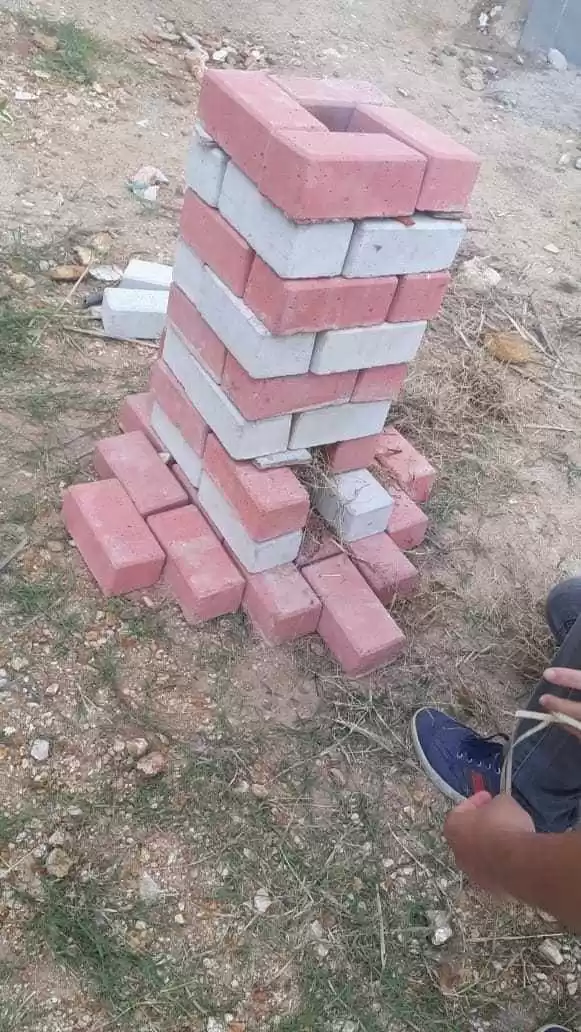
After the experiment, in order to qualitatively evaluate the students’ learning, a report was proposed with the following mandatory structure: introduction, materials and methods and conclusions.
5. RESULTS AND DISCUSSIONS
The construction of the rocket stove provided a space for extensive discussions, which would be difficult to approach with more traditional scripts of physics experiments for high school. The methodology led to the theme of renewable and non-renewable energies, discussions about the greenhouse effect caused mainly by gases emitted in the burning of biomass. Another discussion raised by the students themselves was the question of efficiency that could be achieved using geometric parameters and concepts of physics.
In the final reports of the practice, the students attributed great importance of experimental practices in this style in which theories gain practical and simple applications. Another relevant observation of the students was the fact that the group interaction also facilitated the assimilation of the concepts of physics, because theoretical doubts and possible problems with the assembly of the experimental stove were solved in a way in which they felt confident.
The experiment raised the investigative character in the students, raising hypotheses about the law of energy conservation, transfer and propagation of heat. As for the role of the professor in the experimental works, it is important to highlight the duty to be a mediator, offering a practice script that is simple and clear, that is, removing the steps too complex and sometimes unnecessary during the assembly and execution of the experiment. The teacher, when proposing experimental works involving more than one physical concept, as is the case here, should not fall into the error of providing easy answers to questions and difficulties. In his script and performance, he has the position of promoting the students’ findings, who, through social interaction and prior knowledge, will find their answers.
The qualitative demonstration of the efficiency of the stove, compared to the traditional three-stone stove, was carried out by the students in a practical and simple way by comparison. After the construction of the two models of stoves (the three-stone and rocket stove), there was a reflective debate where the groups came to the conclusion that the best way to test efficiency without making calculations, would be weighing, with the aid of a scale, equal amounts of wood for the two stoves. Thus, two equal aluminum pans containing equal amounts of water would be placed simultaneously in the two stoves. They concluded that the stove that made the water boil first and with the least amount of fuel burned, would be the best efficiency. With the test and positive affirmation of the proven hypothesis, the students’ excitement with the product of their experimental and theoretical efforts was notorious.
6. ANOTHER PROPOSAL FOR EXPERIMENTAL PRACTICE FOR A QUANTITATIVE APPROACH
The rocket stove can also be used in a more advanced physics class that already has knowledge about heat transfer theory and mass transfers.
The technique was applied by Okonkwo et al (2017) to test the efficiency of a prototype developed by them. For analysis, the Energy Conservation Law (RAJPUT, 2010) should be applied:
For the rocket stove, the input energy is related to the energy stored in the wood according to the following equation:
Where Mm is the mass of wood, Lm heat of wood, Mc the mass of coal. The output energy is based on the energy transferred to the water, which is modeled by:
Being Ma the initial mass of the water, Cp the specific heat of the water, the temperature variation until boiling is ΔT, Me the mass of evaporated water and L latent heat of vaporization of water. In this model, driving losses are disregarded, so they are considered by energy changes for the stove. Convection and radiation losses can be calculated for the stove and pan based on surface temperatures during combustion. Convection is modeled by Newton’s cooling law:
Where q is heat transfer, heat transfer coefficient h, surface area A, surface temperature Ts and T∞ air radiation temperature in the environment. It is modeled by Stefan-Boltzmann’s law:
Where is the transferred heat, is the emissivity, is the Stefan-Boltzamann constant, α is absorbed from, T∞4 ambient temperature of the fluid and Ts4 surface temperature. Energy transfers are based on terms of the masses on the stove and pan. Stored energy terms are based on material-specific heat according to the following equation:
Where m is the mass, Cp specific heat and ΔT temperature variation. Therefore, fundamental theories of heat transfer, combined with the law of energy conservation determine the magnitude and location of heat losses of the stove. Using the following equation (TUKANA, 1993):
And finally, η efficiency can be calculated by expression of the ratio of the output and input energies:
For this proposal with a more quantitative focus, the teacher will be able to use the rocket stove in experimental classes to teach: the amount of heat, specific heat, latent heat, energy conservation, first law of thermodynamics, Stefan-Boltzmann’s law and other topics of thermodynamics.
7. FINAL CONSIDERATIONS
Proposals for experimental practices, when included in the curriculum, should take into account the reality of the school environment in which it is inserted. Therefore, the criterion in the choice is necessary to involve the students in the activities. The too laborious steps in the assembly, measurements and calculations of the activities need to be thought out so that it does not distract the student from the essential objective.
The scientific knowledge of physics has in itself the dimension, necessarily, the theoretical understanding of the concepts, but also the proof through experiments. These two dimensions are complementary. Therefore, experimental practice becomes inseparable from theory in the process of didactic transposition.
The choice of divergent laboratory enables an environment of creative freedom, group interaction, testing and refutation of hypotheses in a dynamic and participatory way. However, the teacher must have a position to point out possibilities without giving direct answers and solutions to the difficulties of the students, because in this type of proposal, they assume a position of autonomy.
In short, the choice of an experiment with low-cost materials, sustainable proposals and assembly by the students themselves becomes advantageous in schools where there are no laboratory resources. The experimental practice of the rocket stove presented a multidisciplinary possibility that goes beyond the simple teaching of thermodynamic topics and experimental proof of subjects seen in theoretical classes. The students felt connected with an experiment that involved a common everyday problem for many of them.
8. Thanks
I strongly thank the Paraíba Research Support Foundation (FAPESQ-PB) for the continuing teacher training grant of edict no. 009/2019 as scholarship quotas of the Gira Mundo Israel Semi-arid program, granted by the Government of the State of Paraíba.
REFERENCES
AXT, R. O papel da experimentação no ensino de ciências. Tópicos atuais em ensino de Ciências. Porto Alegre: Sagra, 1991.
BORGES, A.T. Novos rumos para o laboratório escolar de Ciências. Caderno Brasileiro .de Ensino de Física, v. 19, n. 3: p.291-313, 2002.
BURNHAM-SLIPPER, Hugh; CLIFFORD, Michael John; PICKERING, Stephen J. Breeding a Better Stove: the Use of Genetic Algorithms and Computational Fluid Dynamics to Improve Stove Design, 2009
CARVALHO, Ricardo Luis Teles de; SILVA, Adeildo Cabral da; LOMBARDO, Magda Adelaide. Saúde e risco ambiental: o caso dos usuários de fogão a lenha no estado do Ceará, região Nordeste do Brasil. Multidimensão e Territórios de Risco. Universidade de Coimbra, p. 513-517, 2014.
COELHO, et al. Conceitos, atitudes de investigação e metodologia experimental como subsídio ao planejamento de objetos e estratégias de ensino. Caderno Brasileiro de Ensino de Física, v. 17, n. 12: p. 122-149, 2000.
DA SILVA, Edson Araujo. O Ensino de Física e as Energias Renováveis. Revista Acervo Educacional (online), v. 1, p. e1309-e1309, 2019.
Dana, B. Design Manual: Rocket box cook stove. Appropriate infrastructure development group. 2009.
DE ANDRADE, Jorge Augusto Nascimento; LOPES, Nataly Carvalho; DE CARVALHO, Washington Luiz Pacheco. Uma análise crítica do laboratório didático de física: a experimentação como uma ferramenta para a cultura científica. 2009.
FARIA, Filipe Pereira; CARNEIRO, Marcelo Carbone. O papel da experimentação na história do ensino de Física no Brasil. Debates em Educação, v. 12, n. 26, p. 36-51, 2020.
FORÇA, Ana Claudia; LABURÚ, Carlos Eduardo; DA SILVA, O. H. M. Atividades experimentais no ensino de física: teoria e práticas. VIII ENCONTRO NACIONAL DE PESQUISA EM EDUCAÇÃO EM CIÊNCIAS, v. 7, 2011.
GANDIGUDE, Aashish; NAGARHALLI, Madhva. Review of Rocket Cook-Stove Geometrical Aspects for its Performance Improvement. Materials Today: Proceedings, v. 5, n. 2, p. 4743-4747, 2018.
GOLDEMBERG, José; LUCON, Oswaldo. Energy and environment in Brazil. Estudos avançados, v. 21, n. 59, p. 7-20, 2007.
HODSON, Derek. Hacia un enfoque más crítico del trabajo de laboratorio. Enseñanza de las ciencias: revista de investigación y experiencias didácticas, p. 299-313, 1994.
KANBACH, Bruno G.; LABURÚ, Carlos E.; SILVA, Osmar HM. Razões para a não utilização de atividades práticas por professores de física no ensino médio. Simpósio Nacional de Ensino de Física, v. 16, 2005.
MAIA, A.; GOMES, C. Possível uso da biomassa como alternativa para o fornecimento de energia do Brasil. Anais do XLI Simpósio Brasileiro de Pesquisa Operacional, v. 197, 2009.
MAZORRA, Javier et al. Panorama do uso de fogões melhorados no Semiárido brasileiro. Sustainability in Debate/Sustentabilidade em Debate, v. 10, n. 2, 2019.
NOKOBUNVA. Rocket Stove, 2016. Disponível em: https://en.wikipedia.org/wiki/File:Rocket_Stove.png . Acesso em 20 de maio de 2020.
OCHIENG, C. A.; VARDOULAKIS, S.; TONNE, C. Are rocket mud stoves associated with lower indoor carbon monoxide and personal exposure in rural Kenya?. Indoor Air, v. 23, n. 1, p. 14-24, 2013.
OKONKWO, Ugochukwu C. et al. Development of a rocket stove using woodash as insulator. Journal of Engineering and Applied Sciences, v. 10, n. 1, p. 1-13, 2017.
PEARCE, Joshua M. Teaching physics using appropriate technology projects. The Physics Teacher, v. 45, n. 3, p. 164-167, 2007.
PINHEIRO, T.F. Aproximação entre a ciência do aluno na sala de aula da 1° série do 2° grau e a ciência dos cientistas: uma discussão. Dissertação de Mestrado. CED/UFSC. Florianópolis, SC. 1996.
PINHO ALVES, J. Regras da transposição didática aplicadas ao laboratório didático. Caderno Catarinense de Ensino de Física, Florianópolis, v. 17, n. 2, p. 174-188, ag. 2000.
PINHO ALVES, José. Atividade experimental: uma alternativa na concepção construtivista. VIII Encontro de Pesquisa em Ensino de Física, 2002.
RAJPUT, R. K. A textbook of engineering thermodynamics. Firewall Media, 2010.
SANTOS, Pedro Vieira Souza. Elaboração de Projetos Práticos como Suporte ao Processos de Ensino-Aprendizagem de Física. Revista Científica Multidisciplinar Núcleo do Conhecimento. Edição 03. Ano 02, Vol. 01, p. 253-264, 2017.
SÉRÉ, M.G. La enseñanza em el laboratório? Qué podemos aprender em términos de conocimiento práctico y de actitudes hacia la ciência? Enseñaza de las Ciencias, v. 20, n. 3, p.357-368, 2002.
STILL, Dean; WINIARSKI, Larry. Increasing fuel efficiency and reducing harmful emissions in traditional cooking stoves. Boiling Point, v. 47, p. 36-39, 2001.
SUBEDEE, Bijay Raj et al. Use of Rocket stove for firewood savings and carbon emission reductions by the households involved in Allo (Girardinia diversifolia) fiber processing at Khar VDC, Darchula District, Nepal. International Journal of Latest Engineering and Management Research, v. 2, p. 28-35, 2017.
TUKANA, S.; LLOYD, C. R. Wood cookstoves in Fiji. Renewable energy, v. 3, n. 2-3, p. 165-172, 1993.
WINIARSKI, Larry. Ten Design Principles for Wood Burning Stoves. Retrieved May, v. 25, p. 2011, 1982.
WITT, Mark; WEYER, Kristina; MANNING, David. Designing a Clean-Burning, High-Efficiency, Dung-Burning Stove: Lessons in cooking with cow patties. Creswell Oregon: Aprovecho Research Center, 2006.
Errata
This article presents the following erratas:
In this work, we chose the divergent laboratory, because its dynamics allows the student to work real physical systems, allowing the approach of equally real problems whose answers are not preconceived. In addition, students can choose which scheme and procedure to adopt during the study. In the exercise stage, all students must answer a series of questions common to all students, procedures, measure, all aiming at training for the second stage. In the second stage, the students decide which activity they will perform, their objectives and hypotheses to be tested, right after the interaction with the teacher, there may be modification and eventual corrections, as well as the verification of the viability of the available material and time to perform the experiment (PINHO-ALVES, 2000; BORGES, 2002).
The parameters are related to the size of the chimney, fuel chamber and air inlet and outlet openings of the fire. If the openings are too small, you will not be able to burn the fuel properly and will generate smoke. On the other hand, if the openings are excessively large, the heat escapes and will not be used efficiently to heat the pan by exhaustion. The dimensions of the parameters follow the principles of Winiarski (1982) and the geometric parameters are found by the formulas of Okonkwo et al (2017) and Dana (2009), which are:
[1] PhD in Condensed Matter Physics, Master in Condensed Matter Physics, specialist in physics teaching methodology and degree in physics.
Sent: July, 2020.
Approved: July, 2020.








